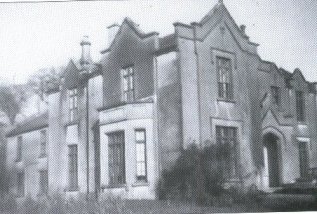|
Slieve
Coillte in 1798 |
|

This monument on Slieve Coillte
was unveiled on April 26 1998 by the local Comóradh
Group as part of the Bicentenary Commemorations.
|
On the top of
Slieve Coillte there is a monument that says-"The
rebels camped on Slieve Coillte from the 7th to the
10th June 1798. Bagenal Harvey resigned his command
here. He was succeeded by Fr.Philip Roche. A de-
tachment under the command of Thomas Cloney attacked
the gunboats
on the River Barrow at Fisherstown."
The following is the full story of
what happened. |
Slieve Coillte
was picked because of the excellent view of the other
camps
in Wexford such as Lacken Hill,Carrigbyrne Hill,
Forth Mountain and Oulart Hill. It is about 3
miles from Scoil Mhuire and you can see several
counties from its summit such as Waterford,Carlow
Kilkenny and Tipperary. It is 888 feet in height. |
|

Camp Sites near New Ross(by
Rory O'H.)
|
After the Battle
of Ross on June 5th 1798, which the rebels lost, they
moved to a camp on Slieve Coillte from Carrigbyrne
Hill.The headquarters of the rebels was Ballysop
House. Lookouts were posted on top of Sliabh Coillte
to watch the River Barrow and the road for the enemy.
The rebels camped on Sliabh Coillte,on its side and
around Ballysop House.
Thomas Cloney was on his way to visit the Sweetmans in
Newbawn one night and found his lookouts had
"skulked down from the camp at the approach of
night. He also took the horse and guns from Miles
Doyle of Arnestown as the rebels were short of
firepower. |
|

Monument at Ballysop which was
unveiled on August 23rd 1998
|
On the above is written "It
was at
Sliabh Coillte our pikes were reeking". Alas,this
was not true. Beauchamp Bagenal Harvey,who was leader
of the Southern Army, resigned at Sliabh Coillte. Some
say he was disgusted at what happened in a place
called Scullabogue which is near to New Ross town.
Here, over 100 loyalists,including children,were
either burned,shot or piked to death in a shed. It was
revenge for the rebel defeat at Ross.
Others say Harvey
proved to be a poor leader at the Battle of Ross
and blamed him for their defeat. Fr.Philip Roche, who
was a curate in Poulpeasty, took over as Commander of
the rebels on Sliabh Coillte. He often said mass for
the rebel army and gave them scapulars. He also gave
letters of protection to loyalists so that they
wouldn't be killed. The rebels stayed on Sliabh Coillte
from 7th to the 10th June. |
|

A 1798 camp scene
|
While
camped on Sliabh Coillte, the rebels noticed
three English gunboats sailing down the Barrow. This
was June 10th. Thomas Cloney from Moneyhore and some
rebels attacked the boats. Two got away but they
captured the "Louisa" and shot its pilot. They found no guns or ammunition
but letters
dispatches (messages) saying how they had the rebels
defeated
in every battle. The pilot or midshipman was
Robert Heyland,aged 36 years and is buried in
St.Mary's cemetery New Ross.
Some rebels read about their own deaths,
to their great amusement.
After Sliabh Coillte the rebels moved to Lacken
Hill to plan a second attack on New Ross. They were
very short on ammunition and so Thomas Cloney decided
to attack Borris House in Borris Co. Carlow.
From Lacken Hill Fr. Roche wrote a letter to Fr.
James Doyle P.P. of Sutton's Parish (Horeswood). He
wasn't very happy with the men from
the parish.This was June14th.
The letter reads as follows:
"Revd.Sir,
You are hereby ordered in conjunction with Edmund
Walsh to order all your parishioners to the camp on
Lacken Hill under pain of the must severe punishment ;
for I declare to you and to them in the name of the
people,if you do not,that I will censure Sutton's Parish
with fire and sword. Come and
see me this day.
Lacken Hill, June14th,
1798.
ROCHE."
To the Revd. James Doyle.
We are told that his orders were obeyed. After the 1798
Rising Fr.Doyle was tried for being on Lacken Hill. He
produced the letter and so was let go free. Fr.Roche
was later tortured and hanged on Wexford Bridge while
trying to make peace.
|
|

|
| Ballysop
House which was the HQ of the rebels when they camped
at Sliabh Coillte. It was demolished in 1965. |
|
Looking
for Help |
Rev.William
Glascott rector of Killesk and St.James' warned
his parishioners of the coming Battle of Ross and some
of the protestants left for Duncannon Fort and
Passage to seek protection.
Landowner Francis Glascott of Piltown wrote to Bagenal
Harvey seeking to protect his property. Harvey replied
that he could scarcely protect himself and had little
control of the rebels since the defeat at Ross and the
shooting of Matthew Furlong with a flag of peace.One
of the protestants shot at the massacre in Scullabogue
after the Battle of Ross on June 5th, was a Philip
Hornick who was a steward to John Glascott of
Alderton. |
| The above is
based on a project done by the '97 '98 fifth class for
a project organised by Mick Walsh of the Horeswood
Comóradh '98. They won some books based on the '98
Rising |
|
Return
to Local History |

